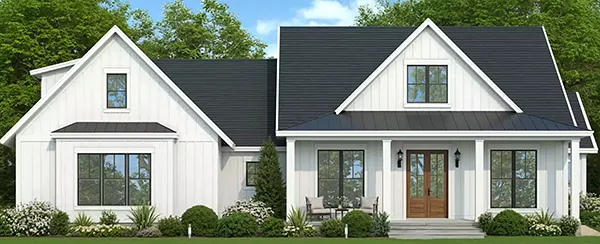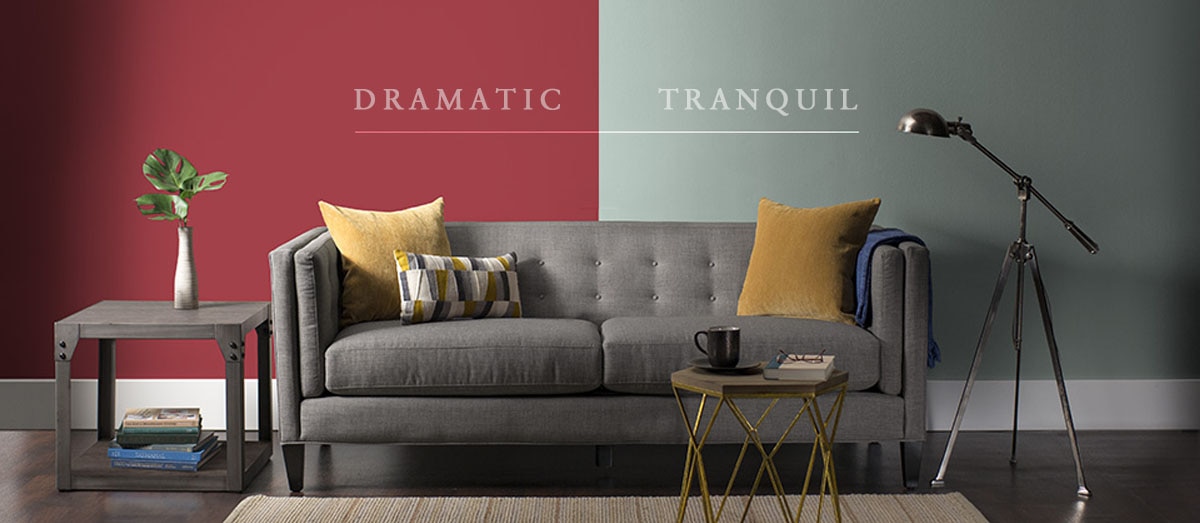Painting 101
When it comes to designing the interior of your home, a key element is choosing the right color scheme for each room in your home. If you plan on painting the walls and ceilings in your new home, then it would be very helpful to brush up on some basic information about colors.
We all know that colors are made up of three primary colors or hues, in various combinations — red, blue and green. We also know that secondary colors are made up from mixing these primary colors. What makes our world so colorful are the tints, tones, values and shades of the basic key hues.
Your choice of paint can completely transform a room, as
Benjamin Moore® shows here.
Let's dip our brushes into some key color verbiage:
- Hue is another word for color.
- Tint means the pure color mixed with white. For example, red mixed with white produces different kinds of reds and pinks.
- Tone of a color means that the pure color is mixed with grey.
- Value of a color means the lightness and darkness of a shade achieved by the sheer or deeper application of the color.
- Shade of a color means that the pure color is mixed with black.
When it comes time to painting your walls and ceilings or deciding on a color scheme for your home décor, it is always helpful to collect chips and swatches of your favorite colors and mix and match until you decide what colors look good together. Don't forget about your home furnishings, because they are a great way to add color and texture to your home and can be moved easily too.
Choosing the right color scheme?
Color scheme helps you create harmony between colors in your home décor. A color wheel can be quite useful in deciding a color scheme for your home because it allows you to compare complimentary colors. There are also plenty of interactive color wheel tools and software available online for you to use. The use of a color wheel makes choosing the combination of colors for painting your walls, accents, furnishings, furniture and accessories much easier.
Here are some tips that you can use to help you decide the right color scheme for your home:
- Monochromatic color scheme uses only one color throughout. Variety is introduced by using various tints, tones, values and shades of that key color and different textures.
- Complimentary color scheme uses two colors placed opposite to each other on the color wheel, their tints, tones, shades and values such as yellow and violet. This scheme is quite bold and lend a dramatic touch to the home décor.
- Analogous color schemes use three hues placed adjacent to each other on the color wheel but use either combination of warm colors only or combination of cool colors only.
- Triadic color schemes use three hues placed consecutively or at equal distances from each other such as red, yellow and blue, their tints, tones, shades and values.
Keep in mind when choosing your color scheme that white and pale colors reflect light to make a room appear larger and dark colors make a room appear cozier and smaller.
Choosing the right sheen or gloss level
The right sheen or gloss level of the paint you choose for your room décor will have quite an impact on the overall look of your room. Here is a list of some of the more popular sheens available:
- Flat or matte finish paints have no shine and thus hide little imperfections in the wall, but they are not very stain-resistant.
- Eggshell paints or velvet-finish paints have very slight sheen or gloss level, are soft and impart a warm look to the room and are easier to clean too. They are great for bedrooms and living rooms.
- Satin or semi-gloss finish paints can be used to highlight architectural details and focal points of the home and are easy to clean, so they're a great choice for kitchens and bathrooms.
- Very high gloss or sheen paints are very reflective and should only be used to highlight doors and trims and to create special effects.
Design Tip
Color is one of the first things you notice when you walk into a room. Is it any wonder that color, and how you use it, is one of the most important decorating decisions you'll make in your home? Inside your home, the latest colors and the way they're applied give voice to your personality and décor. A color wheel can be quite useful while deciding a color scheme for your home because it allows you to compare complimentary colors and textures.



.png)
.png)


